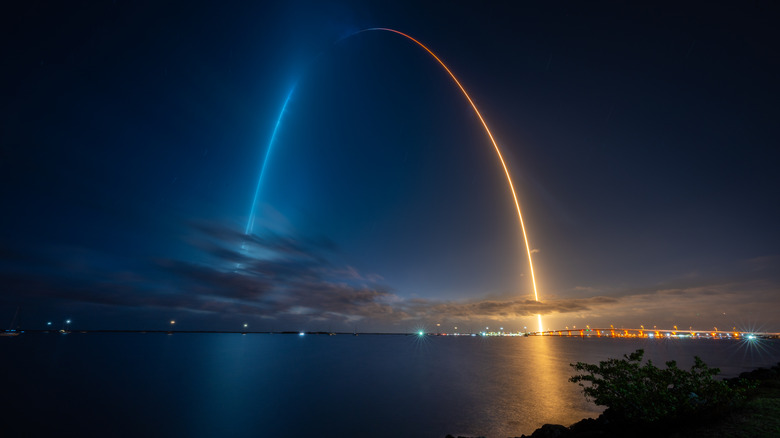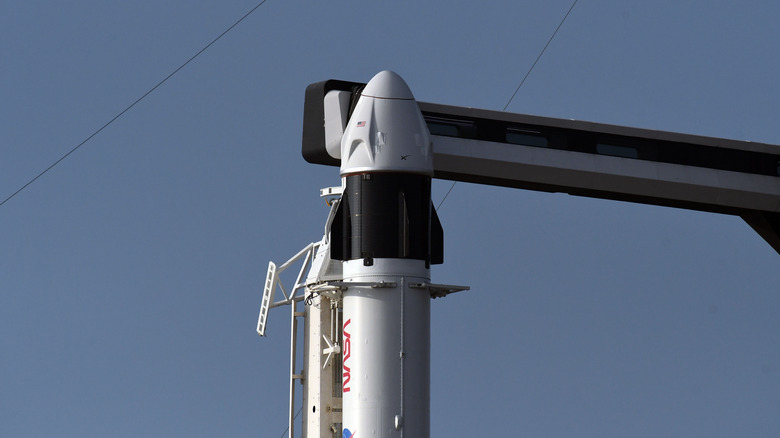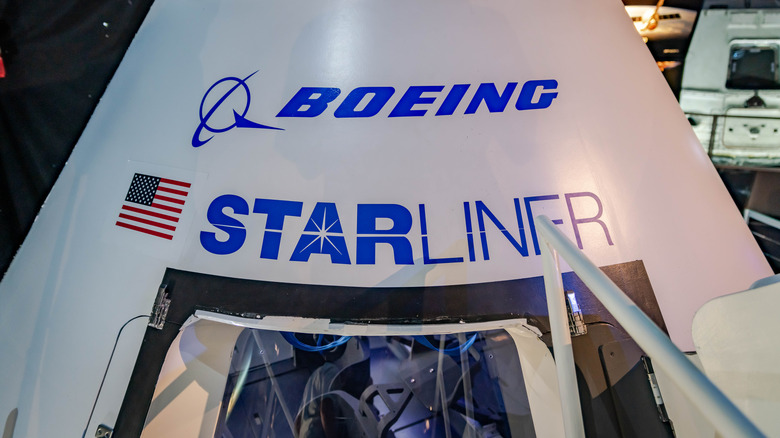SpaceX Crew Dragon Vs. Boeing Starliner: The Biggest Differences Explained
SpaceX has been a trusted name in spacefaring since 2012, when it started transporting cargo to the International Space Station (ISS) using its Dragon spacecraft — becoming the first ever private spacecraft to dock with the station. Following this success, in 2014, NASA selected SpaceX as one of two companies to safely shuttle members of its Commercial Crew Program to the ISS, and the Elon Musk-owned firm got to work on its Crew Dragon spacecraft that could carry passengers. By 2019, it completed its first test mission to the ISS, and since 2020 has been sending astronauts, with 42 total visits.
The other company entrusted to ferry astronauts back and forth to the ISS was Boeing, with its Starliner spacecraft. Despite a much longer 100-plus-years history in aviation and aerospace manufacturing, Boeing's crew transportation spacecraft faced a series of delays and setbacks in development, including a helium leak in the service module, an oxygen valve problem on the Atlas rocket, and a launch computer triggering the automatic abort sequence. Starliner's first crewed test launch finally happened on June 5, 2024. However, since this date, further problems with the Starliner has caused crew members to be stranded on the ISS, with the spacecraft set to return to Earth unmanned.
The proposed viability of two different spacecrafts was to provide NASA with the option to choose which might work best for each mission, as well as a contingency in the case of an emergency — so, how do they compare to each other?
SpaceX Crew Dragon
SpaceX's Dragon spacecraft can hold up to seven passengers as well as a good amount of storage. The capsule has a 13-foot diameter, with 328-cubic feet of pressurized space for astronauts in a streamlined interior with digital displays and cushioned seats. The Dragon is 26.7-feet tall on its own, while the Falcon 9 rocket it sits on stands at 229.6 feet high.
Situated below the capsule is a trunk with 1,300 cubic feet of space for unpressurized cargo. Just before the Dragon reenters Earth's atmosphere, this trunk is released and allowed to burn up in the atmosphere. Half of the trunk's hull is covered with solar panels that provide 5 kW of electricity to the craft. If it needs to, the Crew Dragon can remain docked with the ISS for seven months.
There are 16 Draco thrusters installed throughout the Dragon's hull, using their 90-pounds of force each to help the spacecraft dock with the ISS and maneuver during orbital missions. Furthermore, there are eight SuperDraco engines for the Dragon's launch abort system. Each of these engines produces 16,000-pounds of force. When the Dragon returns to Earth, it has four main parachutes to slow its descent.
Boeing Starliner
The Boeing Starliner capsule has a 15-foot diameter, which makes it slightly wider than SpaceX's Crew Dragon spacecraft, but in terms of height, Starliner is the runt of the two, coming in at 16.5-feet tall – ten feet shorter. Where the Dragon has the trunk, Starliner has its service module, connected underneath the crew module. The bottom of Starliner's service module is outfitted with a solar array that houses more than 3,500 solar cells to generate electricity for the spacecraft.
The Starliner can remain docked and in touch of those living on the International Space Station for up to seven months, just like SpaceX's Dragon. The biggest difference between the two vessels is their appearance. Starliner more closely resembles the old Apollo command modules, although it is a little more spacious, fitting up to seven crew members opposed to Apollo's three. While there isn't data available on the service module's volume capacity for cargo, Barry "Butch" Wilmore and Sunita "Suni" Williams transported 759 pounds of cargo for their visit to the ISS in 2024.
Unlike previous spacecrafts, the Starliner is designed to make a ground landing rather than a water landing. When Starliner returns to Earth, it uses three parachutes and a series of airbags to safely land.


